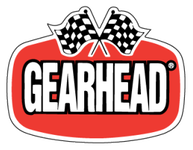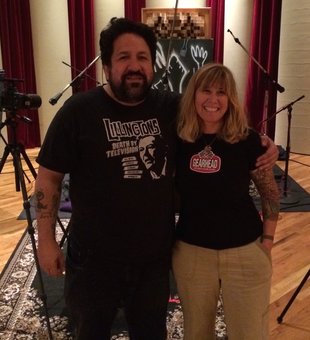 Official Movie poster Official Movie poster As I sat in the luxurious auditorium of the Alamo Drafthouse/New Mission Theater, I marveled at the comfort of the chairs and the built in table tops. Waitresses roamed the isles, asking customers if they would like to order anything to eat or drink. Wow, you can actually sit and watch a movie and order drinks and food? Wow, this is living! The atmosphere was in stark contrast to the movie we were all there to see. Turn It Around: The Story of East Bay Punk was about to delve into a world I had lived in thirty plus years ago, a world of DIY punk rock ethos, of ripped jeans, eating out of dumpsters and vibrant creative self-expression that gave birth to one of the best-known rock bands in the world.  V/A "Turn It Around" double 7" compilation documenting early Gilman bands V/A "Turn It Around" double 7" compilation documenting early Gilman bands Splashed up on the huge screen was a giant image of my old friend Walter Glaser’s face which graced the cover of the 7” compilation Turn It Around released by MRR years earlier. I anxiously peered around to see if anyone I knew was there. I didn’t recognize any faces, but that wasn’t surprising given the fact that everyone was thirty years older. After a brief announcement, the lights dimmed and I was transported back to a world I had relived many times through music and memories.  Director Corbett Redford and crew at Q & A after the screening Director Corbett Redford and crew at Q & A after the screening Turn It Around: The Story of East Bay Punk is a love letter to a time in history that was exceptional for it’s community identity and ideals, bound together by a creative explosion of self expression and musical experimentation. Director Corbett Redford grew up as part of the East Bay punk scene, playing in bands and paling around with fellow punks Billy Joe Armstrong and Mike Dirnt. While the movie is funded and produced by Green Day, it is anything but a Green Day movie. Beginning with interviews from the original punks from the late 70s, the scene is set with by Penelope Houston, front woman of the legendary Avengers, and Jello Biafra of the Dead Kennedys as well as interviews from multiple bands and participants from that time. A dead-pan narration by Iggy Pop ties the multi-layered scene of music, photos and memories together, painting the larger picture of boredom, political upheaval and curiosity that led to the birth of bay area punk rock. Fabulous footage consisting of grainy home videos, flyers and animated drawings push the history forward to the mid-eighties in Berkeley where Gilman St. became the home to the next generation of bands. I sat mesmerized by the footage flashing before my eyes. Rare home videos, flyers, drawing, and faces of people I had spent countless hours hanging out with, watching on stage, writing about and playing on the air flashed across the screen, accompanied by the pounding familiar soundtrack of music that had been created during that time. It was exciting and emotional to watch a scene at once so familiar documented like a Ken Burns PBS special dance across the huge screen.  Flyer from author's collection Flyer from author's collection Towards the middle of the movie, the wildly successful all ages club started by Maximum Rock and Roll (MRR) founder and editor Tim Yohannan takes center stage. As well it should. Being the only club in the area open to all ages, it was the epicenter of music created by the younger generation of punks that rocked the music industry to it’s core. Part community center as well, 924 Gilman St. was a safe haven from drugs, alcohol and violence usually associated with the aggressive music being created. Anyone could go, and all were accepted. As a geeky music obsessed observer, I spent many happy evenings there pogoing to the bands I loved. I was witness to the birth of Green Day (formerly Sweet Children), The Offspring, Operation Ivy and countless other bands that would go on to define a generation of music and what it meant to be “punk rock”. Distilling almost 600 hours of interviews and footage down into a two and a half hour movie was a monumental task. The fact that Redford was able to find a cohesive thread for the story through all that is actually pretty amazing. As the movie competently explains, there were many diverse little pockets in tiny towns through out the Bay Area filled with kids creating and exploring their own version of punk rock. Because so many important bands emerged over the years, it would be easy to just focus on one part of it, but Redford successfully documents the influence of the mid-70s punk scene on the later 80s and early 90s punk scene.  Flyer from author's collection Flyer from author's collection Weaving more interviews, rare footage, flyers and yet more animation, the second half of the movie shifts to the younger bands and participants that made Gilman St. their home. This is the only part of the movie I felt was unfocused and dragged a bit. So many divergent genres erupted during this time, and Redford tries to include it all by touching on the Riot Grrl movement, the infamous signing to a major label of Jawbreaker, the Outpunk movement and several other side notes. It was a little distracting and since each of these side-notes only got a few minutes I feel much of that footage could have been used as “extras” when this comes out on DVD, thereby giving a deeper look at each of these areas. While they were all important parts of the scene, including these short little forays into those stories slows the pace of the movie and really distracts from the larger story being told.  Flyer from author's collection Flyer from author's collection For fans of Green Day, Operation Ivy, Rancid and all the other bands that came out of the East Bay, this is NOT A GREEN DAY MOVIE. Yes, there’s fabulous footage of the band playing at backyard BBQs and really great early photos that I’ve never seen. The interviews with Green Day’s Billie Joe are wonderfully down to earth and exuberant. But there’s tons of this sort of footage for all the bands, and it really gives Green Day’s rise to success a context. Billie Joe says probably one of the coolest things in the entire movie: talking about all the bands in the area that inspired him he gushes, “We’ve got Neurosis!” My only other criticism of this movie is the lack of focus on the music that plays throughout the movie. Maybe I’m only one of a handful of nerds who sits through all the credits in the movie, waiting to read the list of bands and songs that play through out the film. It may just be an oversight on Redford’s part, or the thought that everyone knows the music playing, but it is an essential part of this documentary, so why not include it for those who may not know the music?  Flyer from author's collection Flyer from author's collection I sat in that dark theater with mixed emotions swirling through my body: pride, excitement, passion, inspiration, surprise (Tim from Rancid looks REALLY different from how I remember him!) and a little bit of sadness. I laughed and cheered along with the rest of the audience but I wanted to cry when former Mordam owner Ruth Schwartz talked about making amends with MRR founder Tim Yohannan as he lay dying. It was really touching. While Gilman St. and MRR still carry on, the unity, support and excitement didn’t. There’s a lot of judgment out there now about what it means to be punk. That’s how these things are. They are fleeting bursts of energy and creativity and if you were lucky enough to have been there, those memories will always be part of who you are. If you weren’t there, you are lucky enough to have this movie to show you everything you missed. The overall message of this movie is one of hope that this movie will inspire the current crop of youngsters to go create their own scene, and not wait for someone else to do it. DIY baby! Maybe one day you’ll be sitting in a luxurious theater watching a documentary about your scene, but until then, enjoy this amazing movie that is a deep passionate French kiss to our scene.
–Michelle Haunold |
Author
Archives
July 2024
Categories
All
|



 RSS Feed
RSS Feed